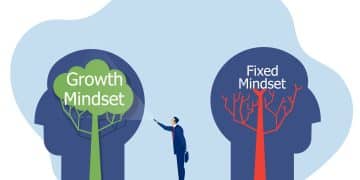Mindfulness in the Workplace: Key Techniques to Enhance Focus and Boost Productivity

Mindfulness in the Workplace has gained significant attention in recent years as organizations seek ways to improve employee well-being, focus, and overall productivity.
By incorporating mindfulness techniques into daily routines, individuals can enhance their ability to manage stress, stay present, and sharpen their focus on tasks.
In this article, we will explore key mindfulness techniques that can be easily implemented in the workplace, helping to create a more balanced and productive work environment.
What Is Mindfulness in a Professional Context?
Mindfulness in the workplace means being fully present and engaged in your professional environment.
It involves paying close attention to your thoughts, emotions, and physical sensations in a non-judgmental way.
This awareness helps reduce distractions and allows employees to bring their full attention to their tasks, improving performance and well-being.
Research shows that regular mindfulness practice can lead to increased gray matter in the hippocampus (linked to memory and learning) and decreased activity in the amygdala (associated with stress and anxiety).
These brain changes improve emotional stability and cognitive function, creating a healthier and more focused work environment.
How Mindfulness Differs from Traditional Stress Management?
Traditional stress management techniques often focus on external factors—methods such as time management, task delegation, relaxation exercises, or even seeking external support like therapy.
These strategies aim to alleviate stress by adjusting the external circumstances that cause it or by changing how tasks and responsibilities are approached.
In this way, they offer quick relief but may not always address the root cause of stress or help individuals cope effectively in the long term.
In contrast, mindfulness offers a fundamentally different approach to stress management. Mindfulness is rooted in the idea of cultivating awareness and presence in the moment.
Rather than focusing on altering external circumstances, mindfulness encourages individuals to pay attention to their thoughts, emotions, and physical sensations as they arise, without judgment.
It helps individuals better observe how they respond to stress, enhance emotional regulation, and build long-term resilience.

Key Benefits of Mindfulness in the workplace
In the workplace, mindfulness can be transformative, offering several key benefits that directly contribute to productivity, emotional resilience, and decision-making.
Below, we explore the key advantages of mindfulness in a professional setting.
Improved Focus in High-Pressure Environments
Mindfulness fosters a present-moment focus that minimizes distractions. Employees who practice it can better manage multitasking and switch between tasks more effectively, maintaining high productivity even under pressure.
Rather than being overwhelmed by competing demands, mindfulness helps employees break down tasks into manageable steps, enabling them to tackle one thing at a time with clarity.
This leads to sustained productivity, even in pressure-filled situations, as employees learn to channel their energy and attention into the most important tasks without becoming overwhelmed or distracted.
Reduced Stress and Emotional Burnout
Workplace stress is a common issue that leads to burnout, especially in demanding roles where employees are constantly under pressure.
Mindfulness has been shown to significantly reduce stress by promoting relaxation and emotional regulation.
Regular techniques like mindful breathing or short meditations help lower cortisol levels, which reduces anxiety and prevents burnout. Over time, this fosters a calmer, more sustainable work experience.
When practiced regularly, mindfulness helps employees stay grounded and calm, even when faced with tight deadlines or challenging situations.
Enhanced Decision-Making and Problem Solving
One of the most powerful ways mindfulness benefits employees is through its impact on decision-making and problem-solving abilities.
Mindfulness improves executive functions, enabling clearer thinking and better problem-solving.
It supports objective assessment and creative solutions by reducing mental rigidity and promoting a flexible mindset.
The ability to remain calm and clear-headed in decision-making allows employees to navigate complex challenges and make informed choices that benefit both themselves and the organization.
Common Challenges in Practicing Mindfulness at Work
While mindfulness offers numerous benefits in the workplace, incorporating it into a busy workday can present several challenges.
Managing Digital Distractions
Constant emails, messages, and alerts can disrupt focus. Designated “email check” times and using Do Not Disturb features help minimize interruptions.
When distractions arise, short mindful breathing exercises can quickly restore concentration.
Coping with Time Pressure and Heavy Workloads
Time constraints are common, but mindfulness can help break tasks into manageable parts.
By prioritizing based on importance rather than urgency, employees can work more efficiently and with less stress.
Overcoming Skepticism
Some people see mindfulness as spiritual or irrelevant to work. To address this, present it as a science-based tool for productivity and well-being.
Offer workshops and encourage open dialogue to foster acceptance and engagement.
Essential Mindfulness Techniques for Busy Professionals
In a fast-paced work environment, finding time to practice mindfulness can seem daunting, but even the busiest professionals can benefit from simple and effective mindfulness techniques.
- Short Meditation Exercises
Even five minutes of meditation can improve clarity and calm. Sit comfortably, close your eyes, and focus on your breathing. When your mind wanders, gently return your focus to your breath.
- Mindful Breathing for Stress Relief
Use the 4-7-8 technique: inhale for 4 seconds, hold for 7, exhale for 8. Repeat several cycles to activate relaxation and reduce stress instantly.

Incorporating Mindfulness into Daily Tasks
Incorporating mindfulness into daily tasks can significantly enhance focus and reduce stress without disrupting your routine.
For example, mindful emails involve reading each message fully, pausing to reflect, and then responding thoughtfully.
In meetings, practicing mindfulness means listening actively, staying present, and avoiding distractions like multitasking.
Taking mindful breaks is another effective technique—stepping away from screens and taking a moment to notice the sounds, sensations, and sights around you.
These techniques are simple yet powerful, helping to reduce stress and improve focus without disrupting your routine.
Integrating Mindfulness into Your Workday
Measuring Impact and Staying Consistent
Tracking progress and maintaining consistency are key to realizing the full benefits of mindfulness in the workplace.
Tracking Focus and Productivity Gains
Use time-tracking apps or personal journals to observe improvements in task completion and focus. Feedback from peers and performance reviews can also reflect positive changes.
Recognizing Reduced Stress
Notice fewer physical symptoms like tension or fatigue. Are you calmer under pressure? Self-assessments and peer observations can help track progress.
Staying Committed Long-Term
Build consistency with small daily habits. A mindfulness journal can help, as can involving your team in shared practices. Continue learning through workshops, books, or apps to keep your practice fresh and engaging.
Mindfulness isn’t just a personal development tool—it’s a transformative practice that enhances how we work, think, and collaborate.
By consistently integrating mindfulness into your workday, you create a healthier, more productive, and more focused professional life.
Did the content help you understand Mindfulness in the Workplace? Take the opportunity to put it into practice.
Stay tuned to our website for more content like this!





